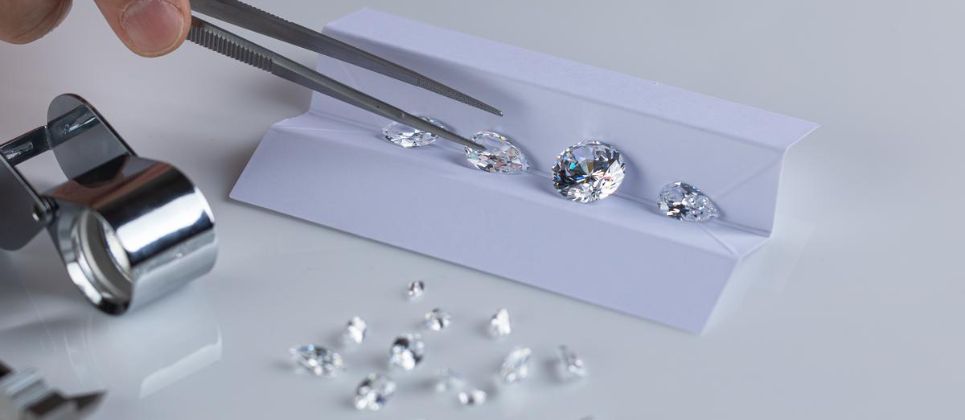Table of Contents
Introduction to Diamond Grading
When it comes to buying a diamond, the quality and value of the stone are paramount. But how can you be sure you’re getting exactly what you’re paying for? This is where diamond grading comes into play. Diamond grading involves evaluating a diamond based on several key criteria, including cut, color, clarity, and carat weight. Understanding these factors is crucial for both buyers and sellers.
Why Diamond Grading Matters
Diamond grading ensures transparency and trust in the diamond market. It provides a standardized way to assess and communicate the quality of a diamond, allowing buyers to make informed decisions and sellers to justify their prices. A reputable grading report can make all the difference in the purchasing process, helping to avoid confusion and potential disputes.
What is GIA?
The Gemological Institute of America (GIA) is one of the most respected and well-known diamond grading authorities in the world. Established in 1931, igi vs gia has set the gold standard in gemological research and education.
History and Background
Founded by Robert M. Shipley, GIA was created to bring scientific accuracy to diamond grading. Over the decades, GIA has expanded its expertise to various gemstones and continues to lead the industry with its rigorous standards and innovative research.
Grading Criteria and Standards
GIA’s grading system is based on the Four Cs: Cut, Color, Clarity, and Carat Weight. Their approach is renowned for its accuracy and consistency. Each diamond undergoes a thorough evaluation by trained gemologists using state-of-the-art equipment. GIA’s grading reports are widely accepted and trusted across the globe.
Reputation and Global Influence
GIA’s reputation is almost unmatched. It’s often considered the benchmark for diamond grading, with a significant influence on both the market and public perception. Many high-end jewelers and auction houses rely on GIA for certification, underscoring its importance in the industry.
What is IGI?
The International Gemological Institute (IGI) is another prominent player in the diamond grading arena. Established in 1975, IGI is known for its international presence and comprehensive grading services.
History and Background
IGI was founded in Antwerp, Belgium, and has since grown to operate numerous laboratories worldwide. Its mission is to provide accurate and reliable grading services to meet the needs of the global jewelry market.
Grading Criteria and Standards
Like GIA, IGI uses the Four Cs to evaluate diamonds. However, IGI is also known for incorporating additional details in its reports, such as the diamond’s fluorescence and proportions. Their grading methods are designed to provide a comprehensive assessment of a diamond’s quality.
Reputation and Global Influence
IGI is respected for its wide-ranging services and international reach. While it may not have the same level of prestige as GIA, it is still a credible and widely recognized grading authority. IGI’s reports are accepted by many jewelers and consumers worldwide.
Comparison of GIA and IGI
Grading Accuracy and Consistency
When it comes to grading accuracy, both GIA and IGI have established themselves as reliable authorities. GIA’s grading process is often viewed as the gold standard, with its meticulous procedures and high level of consistency. IGI, while also accurate, may have slight variations in its grading standards, which can sometimes lead to discrepancies.
Cost and Affordability
In terms of cost, IGI might offer more affordable grading services compared to GIA. This can be an attractive option for those looking for a quality grading report without the higher price tag associated with GIA’s services. However, the cost difference should be weighed against the value and recognition of the grading authority.
Consumer Trust and Market Perception
GIA enjoys a higher level of consumer trust and market perception due to its long-standing reputation and rigorous grading practices. IGI, while reputable, may not command the same level of trust in the market. This can impact the perceived value of lab created diamonds graded by IGI versus those graded by GIA.
Choosing the Right Grading Authority for You
Factors to Consider
When deciding between GIA and IGI, consider factors such as the cost of grading, the importance of industry prestige, and the specific details provided in the grading report. If you’re looking for the highest level of market recognition, GIA may be the better choice. For a more affordable option with comprehensive reporting, IGI could be suitable.
Making an Informed Decision
Ultimately, the choice between GIA and IGI depends on your individual needs and preferences. Researching each authority’s grading practices and understanding their reports can help you make an informed decision. Whether you prioritize cost, prestige, or detailed information, both GIA and IGI offer valuable services in the world of diamond grading.
Conclusion
Choosing the right diamond grading authority is crucial for ensuring you get the quality and value you’re paying for. Both GIA and IGI have their strengths and weaknesses, and the best choice depends on your specific needs and priorities. By understanding the differences between these two reputable organizations, you can make an informed decision and feel confident in your diamond purchase.

